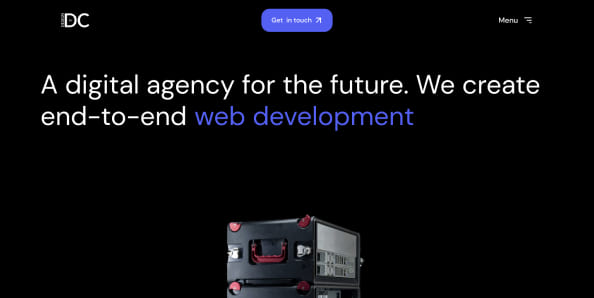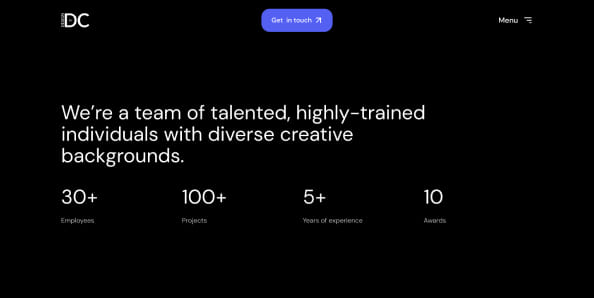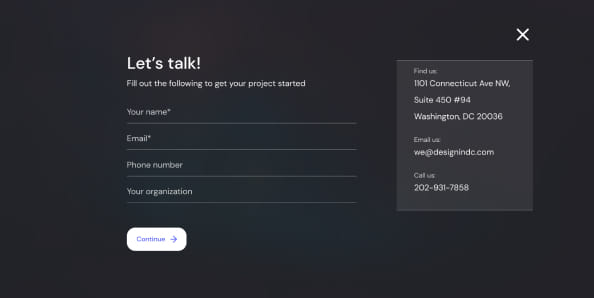A Guide to Future-Proofing Your Website
2020 has been a whirlwind, and in difficult times like these, it’s easy to go into survival mode– taking things one day at a time, because (let’s face it) we don’t know what the future will look like.
But that doesn’t mean you should take this approach with your company’s website.
As opportunities for in-person exchanges become increasingly sparse, it’s important to build a strong online presence. But that goes beyond just creating a fantastic website, and then forgetting about it for the next 5 years. It means creating a website, and an online identity, that’s built to last.
The more steps your business takes towards future-proofing your website, many of which are simple and easy to do at the outset, the more time and energy you’ll save yourself down the road.
A website is a vehicle for your business– so let’s think about it just like that. Think about your website like investing in a car. Sure, you want it to look nice, maybe even a little bit flashy. But what you want more than anything is something timeless, reliable, and most importantly, safe.
Use smart design to keep your site competitive
There are several tactics you can use when designing your website to ensure that it keeps performing well into the future.
The overall strategy is to build websites for people first– and to consider how the habits, likes and dislikes of those people might change over time. This might be intuitive, or based on emerging trends in web design. Here are some basic design principles that will help you secure your website’s future success.

Simplicity always wins
The digital landscape we are dealing with today is oversaturated. People are constantly consuming media of all kinds, from all directions. Attention spans are lower. Something as (that’s right) simple as a clean, minimal layout, colour scheme and navigation can go a long way in pleasing your user’s eye and breaking through the noise. Like we’ve seen with mega-brands like Apple or Nike, clean design is timeless.
Responsive design is a must
We all know that responsive design is an industry standard. As mobile use continues to be pervasive, every website should ensure they’re performing across platforms in order to stay relevant. Keep checking in on your analytics to gain a deeper understanding of how users are coming to your site– something that may change over time. Keeping tabs on how users are accessing your site ensures your design is working to your advantage.
Consider the speed of your site
We’ve said it before, and we’ll say it again– speed matters. Loading time is a key indicator as to whether or not a user stays on your site– and you only have a short window of time to grab their attention. As users gain more and more options in the online market, keeping your site speedy will ensure it stays on their radar.
Make data driven decisions
Use analytics to understand how users are engaging with your site– where they’re clicking, what pages they stay on, how they’re searching for you. All of this data adds up to give your website a purpose– one that is grounded in your user’s needs. This purpose may change over time. Securing a strong process for auditing your website and using data to make design decisions will keep you on-track.
Use code that’s adaptable
If you want a website that responds well to users’ needs, then you need to ensure that changes can be made with ease– no matter who’s in charge of making them. The code of the website needs to be simple and accessible, so that anyone can update the site and keep it fresh.
Stay on top of SEO to keep your site discoverable
The key here is to follow Google’s mission— put the user first. Nothing is more important to your SEO than creating content with users in mind. Consider the questions they want answered, and ensure your website provides those answers reliably. The most important aspect of SEO is producing quality content and building high quality links– both of which will provide your user with the valuable information they need. That’s Google’s goal– and it should be yours, too.
Content over Keywords
There are still important keyword practices that your website should follow to maintain good SEO. It’s important to start your journey by performing both short-tail and long-tail keyword searches. Long-tail keyword searches are becoming increasingly important as Google is focusing more on user intent– trying to understand the context in which a user searches online. Using tools like Google Keyword Planner or even Google Autocomplete can help with this research.

It’s important to use these keywords in your on-page SEO, but that shouldn’t diminish your focus on content. Again, Google rewards high-quality, valuable content that answers users questions– don’t let keywords detract from this target.
Use Links Strategically
While links are still important for SEO, the key is to keep them organic. Guest blogging can still be useful, but it has to be quality content on a reputable site in order to achieve your desired effect. Link baiting can work as well– but again, only if it provides relevant information to your users.

And lastly, don’t forget about inbound links! If your internal links make sense and lead to relevant information, they can help to further optimize your site.
Keep your users safe and build trust
As threats to cybersecurity become more and more sophisticated, websites need to be built to withstand hackers and remain safe. Remember, a vulnerable website doesn’t just put you at risk, but also your users, which can lead to huge breaches of trust.

SSL Certificates are a necessity
An SSL Certificate is no longer optional– every website should have one, for two primary reasons. Firstly, it helps build trust with your users by protecting their data. SSL certificates primarily function to protect server-client communication. That means they encrypt every piece of information. This is key for sites that exchange sensitive customer information (i.e. IDs, passwords, credit card numbers)– SSL certificates protect this information against hackers and skimmers.
Secondly, SSL certificates affirm your identity. In order to set up a certificate, you have to go through a validation process that verifies the identity of you and your company. This affirms your integrity as a website, and can also improve your Google ranking.
Invest in Good Hosting
It will always be worth it to invest in the safety of your site. Part of this is ensuring you choose a solid, reputable hosting company that uses good security. A secure host can make all the difference when it comes to protecting your site and your users. While there are many best practices for secure web hosting, make sure you look out for hosts that perform backups and server maintenance, practice network monitoring and malware detection, and specify access restrictions, to name a few.












